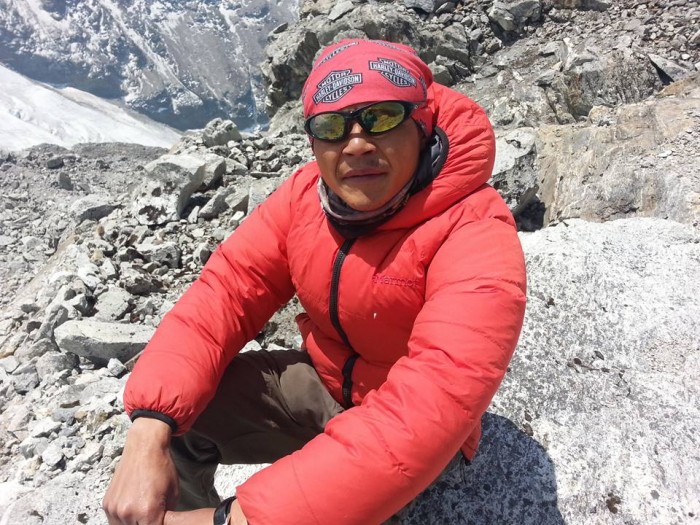The Makalu Base Camp Trek is one of Nepal’s most remote and adventurous trekking experiences, offering unrivaled solitude, unspoiled natural beauty, and panoramic Himalayan vistas. Towering at an elevation of 4870 meters, Makalu Base Camp lies at the foot of the fifth-highest mountain in the world, Mount Makalu (8485m). This trek is perfect for those seeking a quiet, off-the-beaten-path route filled with raw wilderness and cultural authenticity.
Operated professionally by Himalayan Adventure International Treks, this journey into the heart of the Makalu-Barun National Park guarantees a lifetime memory for trekkers from around the globe.
Where is Makalu Base Camp Located?
Makalu Base Camp is situated in the Sankhuwasabha district, located in eastern Nepal within the boundaries of the Makalu-Barun National Park, which borders the Everest region. Unlike the popular Everest or Annapurna trails, the Makalu Base Camp trek route offers peace and minimal traffic, with landscapes ranging from lush rhododendron forests to high alpine meadows and glaciers.
Makalu Base Camp Trek Map and Route Overview
Understanding the Makalu Base Camp trek map is crucial before starting your journey. The trail begins from Num village, reached via a flight to Tumlingtar and a drive. The route passes through Seduwa, Tashigaon, Khongma Danda, Dobate, and Yangri Kharka before reaching Makalu Base Camp.
Makalu Base Camp Trek Route Highlights:
-
Tumlingtar (entry point)
-
Num
-
Seduwa
-
Tashigaon
-
Khongma Danda
-
Dobate
-
Yangri Kharka
-
Makalu Base Camp (4870m)
Check out our downloadable Makalu Base Camp trek map for a clear and detailed trail route.
Best Time for Makalu Base Camp Trek
The best time Makalu Base Camp Trek is during the spring (March to May) and autumn (September to November) seasons. These months offer clear skies, stable weather, and excellent mountain views.
Seasonal Breakdown:
-
Spring (March–May): Blooming rhododendrons and vibrant landscapes.
-
Autumn (Sept–Nov): Clear skies, ideal visibility of Makalu and surrounding peaks.
-
Winter (Dec–Feb): Cold and challenging with snow, only for experienced trekkers.
-
Monsoon (June–Aug): Not recommended due to landslides and leeches.
How Long is the Makalu Base Camp Trek?
The Makalu Base Camp Trek typically takes 18 to 22 days depending on acclimatization and itinerary variation. The total trekking distance is about 150 kilometers (93 miles) round trip.
Short on time? We also offer a Makalu Base Camp trek short itinerary of 14–16 days, combining drive/fly options and helicopter exit choices.
Makalu Base Camp Trek Itinerary – 18 Days
Here is our most popular Makalu Base Camp itinerary offered by Himalayan Adventure International Treks:
Day-by-Day Makalu Base Camp Trek Itinerary:
-
Arrival in Kathmandu
-
Fly to Tumlingtar (510m), Drive to Num (1,560m)
-
Trek to Seduwa (1,530m)
-
Trek to Tashigaon (2,060m)
-
Trek to Khongma Danda (3,500m)
-
Cross Shipton La Pass (4,200m) to Dobate (3,600m)
-
Trek to Yangri Kharka (3,557m)
-
Trek to Langmale Kharka (4,410m)
-
Trek to Makalu Base Camp (4,870m)
-
Exploration Day at Base Camp
-
Return to Yangri Kharka
-
Trek to Dobate
-
Trek to Tashigaon
-
Trek to Num
-
Drive to Tumlingtar
-
Fly to Kathmandu
-
Departure or Cultural Day Tour
-
Departure
Customized Makalu Base Camp packages and helicopter return options available upon request.
Makalu Base Camp Trek Short Itinerary (14 Days)
For trekkers with limited time, we offer a Makalu Base Camp trek short itinerary including key highlights and a helicopter exit:
-
Day 1-7: Same as above until reaching Makalu Base Camp.
-
Day 8: Exploration at Base Camp.
-
Day 9: Helicopter return to Kathmandu.
-
Day 10–14: Rest day and Kathmandu sightseeing or international departure.
This short version significantly reduces the number of walking days and is ideal for adventurers with time constraints or those prone to AMS.
Makalu Base Camp Trek Cost Overview 2025/26
The Makalu Base Camp trek cost depends on the duration, group size, service level, and transport mode.
Standard Cost Breakdown (per person):
| Service |
Cost (USD) |
| Trekking package (guide, porter, permits, meals, accommodation) |
$2,100 – $2,400 |
| Flights (Kathmandu–Tumlingtar round trip) |
$300 |
| Equipment rental |
$50 – $100 |
| Tips & Extras |
$100 – $200 |
🔹 Total Estimated Cost: $2,500 – $2,800 per person for the 20-day trek.
Makalu Base Camp Trip Cost for Indian Nationals
Due to favorable bilateral pricing:
-
Makalu Base Camp trip cost for Indian trekkers ranges from INR 95,000 to 1,20,000 inclusive of domestic flights, permits, guide, porter, meals, and accommodation.
Special discount available for Indian student groups or corporate teams through Himalayan Adventure International Treks.
🇳🇵 Makalu Base Camp Trek Cost for Nepali Citizens
Nepali trekkers benefit from local rates:
-
Makalu Base Camp Trek cost for Nepali citizens ranges between NPR 65,000 to NPR 85,000, which includes permits, transportation, meals, guide/porter, and insurance.
We organize treks for school/university groups at subsidized rates.
Makalu Base Camp Trek Permits
To enter the Makalu-Barun National Park, trekkers must obtain the following permits:
Makalu Barun National Park Entry Permit: NPR 3,000 (Approx. $23)
TIMS (Trekkers’ Information Management System) Card: NPR 2,000 (Approx. $15)
Restricted Area Permit (if entering from Kimathanka or other zones) – Not required for standard route via Num.
Permits are arranged by Himalayan Adventure International Treks as part of the package.
Is Makalu Base Camp Trek Difficult?
Yes, the Makalu Base Camp Trek is considered strenuous and suitable for experienced trekkers. The trail includes steep ascents, narrow ridges, and several high-altitude passes like Shipton La (4,200m). The trek demands good physical fitness, mental resilience, and proper acclimatization.
AMS Sickness and Prevention
AMS (Acute Mountain Sickness) is a genuine concern due to the trek’s elevation above 4,500 meters.
Symptoms Include:
-
Headache
-
Nausea
-
Dizziness
-
Sleep disturbances
Prevention Tips:
All guides from Himalayan Adventure International Treks are trained in altitude sickness response and carry first aid kits and oxygen.
How much does a trek in Nepal cost?
Trek costs in Nepal vary by region and duration:
-
Short treks (3–5 days): $300 – $600
-
Moderate treks (7–12 days): $800 – $1,500
-
Long/Remote treks (14–22 days): $2,000 – $3,000 (like Makalu or Kanchenjunga)
How much does the 14 days Everest Base Camp Trek cost?
A standard 14-day Everest Base Camp trek costs around $1,400 – $1,800, including flights, guide, porter, accommodation, meals, and permits.
Why Choose Himalayan Adventure International Treks?
At Himalayan Adventure International Treks, we specialize in personalized and safe trekking experiences. Our Makalu Base Camp trek package includes:
-
Government-certified guides & porters
-
All permits and logistics handled
-
Delicious, hygienic meals
-
Emergency backup and evacuation support
-
Cultural immersion and sustainable travel
Book Your Makalu Base Camp Adventure Now!
The Makalu Base Camp Trek is an ultimate Himalayan adventure for true explorers. Whether you're a solo traveler, Indian/Nepali citizen, or international trekker, Himalayan Adventure International Treks ensures a seamless and unforgettable journey.

 Plan Your Trip Now
Plan Your Trip Now 


